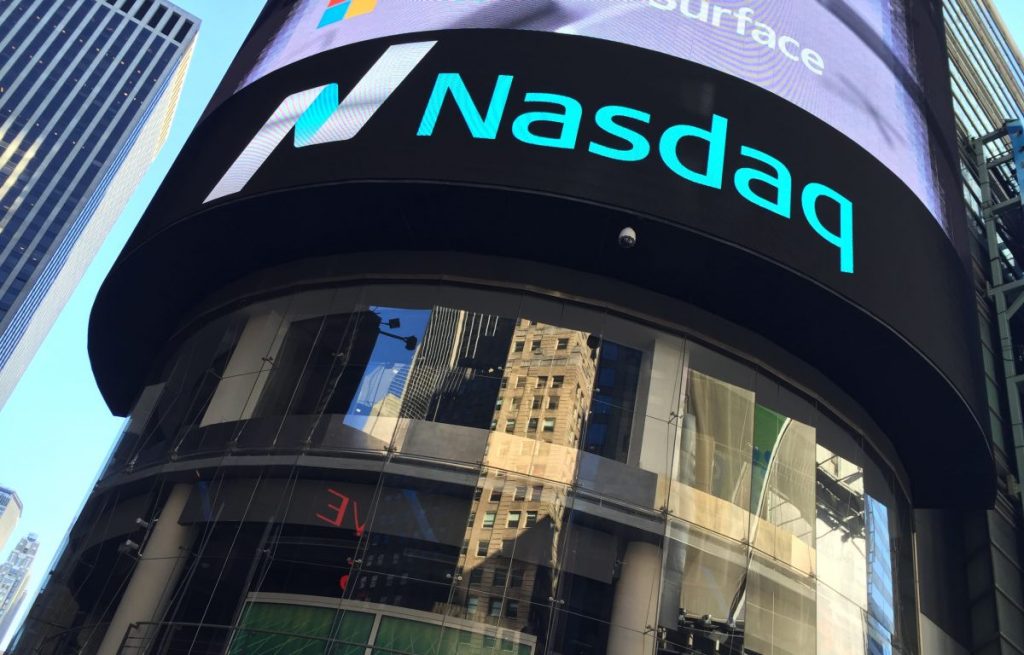—— China Demands US Repeal Tariffs; Merck Could Lose $200 Million from Tariffs; US Existing Home Sales Drop Most Since 2022 as High Rates; Walmart Intensifies Discounting Strategy to Boost Demand; Nvidia CEO Jensen Huang Visits Beijing; Nasdaq Partners With AWS to Help Exchanges Move to the Cloud
1. China Demands US Repeal Tariffs
China called on the United States to remove all unilateral tariffs imposed on Chinese goods and denied that any trade negotiations are underway, underscoring a firm stance despite recent remarks from President Donald Trump suggesting openness to talks.
“If the US truly wants to solve the issue, it should respond to rational voices from the international community and at home and thoroughly eliminate all unilateral tariffs against China,” Ministry of Commerce spokesperson He Yadong said at a regular press briefing in Beijing on Thursday.
He rejected speculation about progress in bilateral dialogue, calling such reports “groundless” and urging the US to “show sincerity” if it genuinely seeks to reach a trade agreement.
Beijing’s comments suggest that verbal overtures from the White House may not be enough to ease tensions. Instead, Chinese officials are maintaining that any move toward de-escalation must begin with the rollback of punitive trade measures unilaterally imposed by Washington.
The remarks appeared to pour cold water on Trump’s more conciliatory tone earlier this week, when he hinted at the possibility of lowering tariffs — currently set at 145% for most Chinese imports — and said, “China is going to do fine” once talks resume.

Source: Bloomberg – China Says US Should Revoke Unilateral Tariffs, Denies Talks
______
2. Merck Could Lose $200 Million from Tariffs
Merck & Co. said Thursday that it expects to take a $200 million hit in 2025 from tariffs already implemented in the ongoing US-China trade war, with the potential for further losses if President Donald Trump follows through on threats to impose new levies on pharmaceutical imports.
The projection does not include additional duties that may be placed on drug imports to the US, which Trump has long advocated as a means of reshoring pharmaceutical production. Merck, which has significant manufacturing operations in Europe, could face higher costs should such tariffs materialize.
Shares of Merck dropped as much as 2.8% in early New York trading following the announcement.
Despite the looming policy risks, Merck posted better-than-expected results for the first quarter. The company reported $15.5 billion in revenue, topping the $15.3 billion expected by analysts. Adjusted earnings per share came in at $2.22, beating estimates of $2.13.
Sales of its blockbuster cancer drug Keytruda totaled $7.2 billion, missing the Street’s estimate of $7.5 billion. However, Winrevair — Merck’s new treatment for a rare lung condition — exceeded expectations with $280 million in revenue in its first full quarter on the market.
Analysts say multinational drugmakers are increasingly caught between globalized supply chains and shifting national trade policies. With the US reevaluating its pharmaceutical dependencies, Merck and peers may need to reassess production footprints and pricing strategies.

Source: Bloomberg – Merck Expects $200 Million Tariff Hit Amid Gardasil Fallout
______
3. US Existing Home Sales Drop Most Since 2022 as High Rates
Sales of previously owned homes in the US fell in March by the most in over two years as buyers continue to be squeezed by elevated mortgage rates and historically high prices.
Contract closings declined 5.9% last month to an annualized pace of 4.02 million, according to data released Thursday by the National Association of Realtors (NAR). That’s the lowest March reading since 2009 and came in well below the median forecast from a Bloomberg survey of economists.
The median sales price rose 2.7% year-over-year to $403,700 — a record for the month of March — marking the ninth consecutive month of annual price increases since mid-2023.
“Home ownership remains out of reach for many Americans,” said NAR Chief Economist Lawrence Yun on a call with reporters. He added that the price gains were largely driven by a rise in sales of homes priced above $1 million, though he noted the overall price appreciation was “relatively mild” compared to wage growth.
Affordability remains near record lows, and the outlook is dimming further. New tariffs announced by President Donald Trump are expected to raise the costs of household goods and construction materials, adding pressure on consumers already struggling with inflation.
Analysts warn that the housing market is unlikely to return to the days of broad-based price surges, particularly as borrowing costs remain high and economic uncertainty persists.

Source: Bloomberg – US Existing-Home Sales Fall by Most Since 2022 on Rates, Prices
______
4. Walmart Intensifies Discounting Strategy to Boost Demand
Walmart Inc. is ramping up its discounting strategy as part of a broader effort to stimulate demand and gain market share amid macroeconomic headwinds and the threat of rising costs due to tariffs.
The world’s largest retailer is introducing “manager’s special” signs in stores to highlight price cuts on key items across departments, according to internal documents viewed by Bloomberg News. The tags will show both the original and new prices, signaling Walmart’s focus on matching or beating competitor pricing.
Long known for its everyday low prices, Walmart tends to double down on price competitiveness when consumer spending slows or when it sees an opportunity to capture greater share in the market.
These new signs build on Walmart’s traditional “rollback” discounts — companywide price reductions — and longstanding practices where store managers compare prices with rival retailers to maintain pricing leadership.
A Walmart spokesperson said the signs will also flag deals related to excess inventory and seasonal items. The company has been simplifying its store signage in recent years to better highlight promotions and price advantages.
With tariffs potentially raising costs on imported goods, Walmart’s strategy underscores a proactive push to maintain its value-driven appeal to consumers facing financial strain.

Source: Bloomberg – Walmart Amps Up Discounts to Lure Cost-Conscious Customers
______
5. Nvidia CEO Jensen Huang Visits Beijing
Nvidia Corp. Chief Executive Officer Jensen Huang made a quiet visit to Beijing on Thursday, following sweeping new US export restrictions on the company’s H20 chip that sent its shares tumbling earlier this week.
According to two people familiar with his itinerary, Huang had been scheduled to meet with Nvidia’s Chinese clients to discuss new chip designs tailored for China. His planned meetings reportedly included Liang Wenfeng, founder of generative AI startup DeepSeek. However, Nvidia later clarified: “Contrary to media reports, Jensen did not meet with DeepSeek during his brief visit to China.”
Still, one person familiar with the matter confirmed that Huang held a separate meeting with Chinese Vice Premier He Lifeng.
During the meeting, Huang said that China remains “a very important market for Nvidia” and expressed hope that the company could “continue cooperating” with Chinese partners, according to state broadcaster CCTV.
Huang’s trip comes as the company braces for a $5.5 billion revenue hit from Washington’s decision to ban exports of its China-compliant H20 chip — a lower-powered model designed to navigate earlier Biden-era controls. The Trump administration’s new restrictions appear to close that loophole.
The visit underscores Nvidia’s continued strategic interest in China, suggesting the company may design yet another China-specific product despite growing hurdles in Washington. The itinerary for Huang’s trip was finalized shortly after President Donald Trump moved to ban the H20 chip outright.

Source: Financial Times – Nvidia chief Jensen Huang flies to Beijing for talks
______
6. Nasdaq Partners With AWS to Help Exchanges Move to the Cloud
Nasdaq Inc. is teaming up with Amazon Web Services (AWS) to help exchanges and other market operators modernize their infrastructure by shifting to the cloud without bearing the full cost and development timeline of doing it alone.
“These are new services they otherwise wouldn’t be able to offer,” said Nasdaq President Tal Cohen in an interview Thursday. “It’s a guide of how to improve your infrastructure to attract more capital and liquidity.”
In a joint statement, Nasdaq and AWS said they will provide “infrastructure, software, data management and services to enable market operators to overcome modernization barriers cost effectively without compromising resiliency or control.”
Exchanges have long aspired to transition to cloud-based systems to cut operational costs and improve scalability, but the shift has been slow due to the high technical demands of real-time trading. In modern markets, the speed of execution is often measured in nanoseconds — billionths of a second — and exchanges must ensure every client receives synchronized price data and vital market information simultaneously.
Nasdaq and AWS aim to address these challenges by offering a secure, high-performance solution specifically designed to meet the demands of capital markets.

Source: Bloomberg – Nasdaq Partners With Amazon Web to Move More Markets to Cloud
______
7. US Mortgage Rates See Biggest Weekly Jump in a Year, Threatening Spring Home Sales
US mortgage rates rose for the first time in four weeks, posting the largest weekly gain since April 2024 and threatening to cool the housing market during the crucial spring buying season.
The average rate for a 30-year fixed loan climbed to 6.83% from 6.62% the previous week, Freddie Mac said in a statement Thursday.
The surge comes as global tariff tensions — particularly between the US and China — have rattled equity markets and pushed up yields on 10-year US Treasuries, which serve as a benchmark for mortgage pricing.
“When [the 10-year yield] rises, mortgage rates typically follow suit,” said Jiayi Xu, an economist at Realtor.com. “Looking forward, competing economic forces are pulling mortgage rates in opposite directions, making it increasingly difficult to predict where they’ll land.”
Demand is already showing signs of weakening. According to data from Redfin Corp., home-purchase contracts in the four weeks ending April 13 fell 0.8% from a year earlier.
“Consumers are feeling anxious about the economy and the rising cost of living, potentially leading them to adopt a ‘wait-and-see’ approach regarding significant purchases like homes,” said Kara Ng, senior economist at Zillow Home Loans.

Source: Bloomberg – US Mortgage Rates Surge by Most in a Year as Tariffs Hit Markets
______
